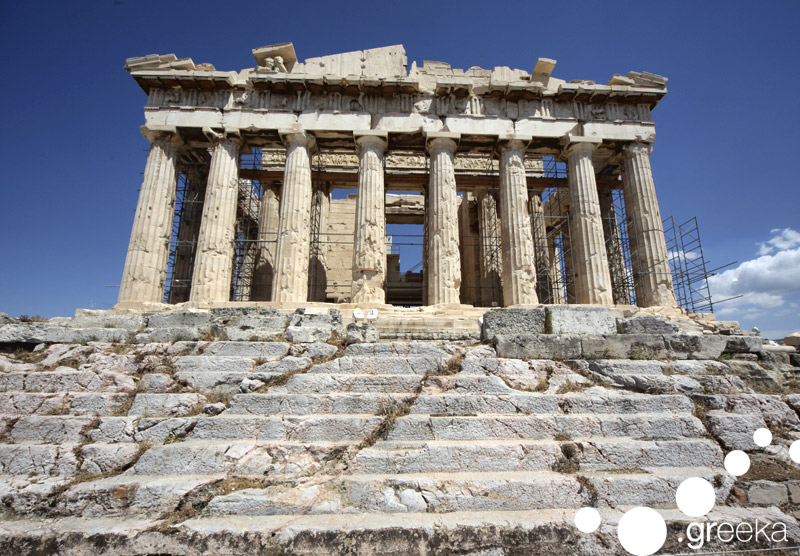The Greeks are best known for their innovative use of columns in architecture. They were the first people to really create and perfect the art of columns. What was so amazing about this was their ability to space them and differ the sizes of them in order to make them appear more perfect in the eye of the beholder. Many monuments, buildings, and temples that were erected by the Greek culture are still around today because they had such solid building techniques.

The Greeks developed the first three orders of columns that are represented in architecture. The Doric, Ionic, and Corinthian.
Doric: "Doric columns stood directly on the flat pavement (the stylobate) of a temple without a base; their vertical shafts were fluted with 20 parallel concave grooves; and they were topped by a smooth capital that flared from the column to meet a square abacus at the intersection with the horizontal beam (architrave) that they carried." (wikipedia)
| Doric Column Ionic: "The Ionic capital is characterized by the use of volutes. The Ionic columns normally stand on a base which separates the shaft of the column from the stylobate or platform; The cap is usually enriched with egg-and-dart." (wikipedia)  Corinthian: "stated to be the most ornate of the orders, characterized by slender fluted columns and elaborate capitals decorated with acanthus leaves and scrolls." (wikipedia)  Columns were a major contribution of Greek design because they are still used in many forms of architecture today, especially in government buildings. However, the Greeks created some lasting pieces of furniture as well. One of those being the klismos chair, it's defining characteristics including splayed legs and a curved back rail. This design is still used frequently today. 
Current Day Applications of Greek Design:

Current design of klismos chair.

A home with columns.

This is a neat video about the Greek temples and their design elements.
https://www.youtube.com/watch?v=F59pH4UJjz4
|
No comments:
Post a Comment